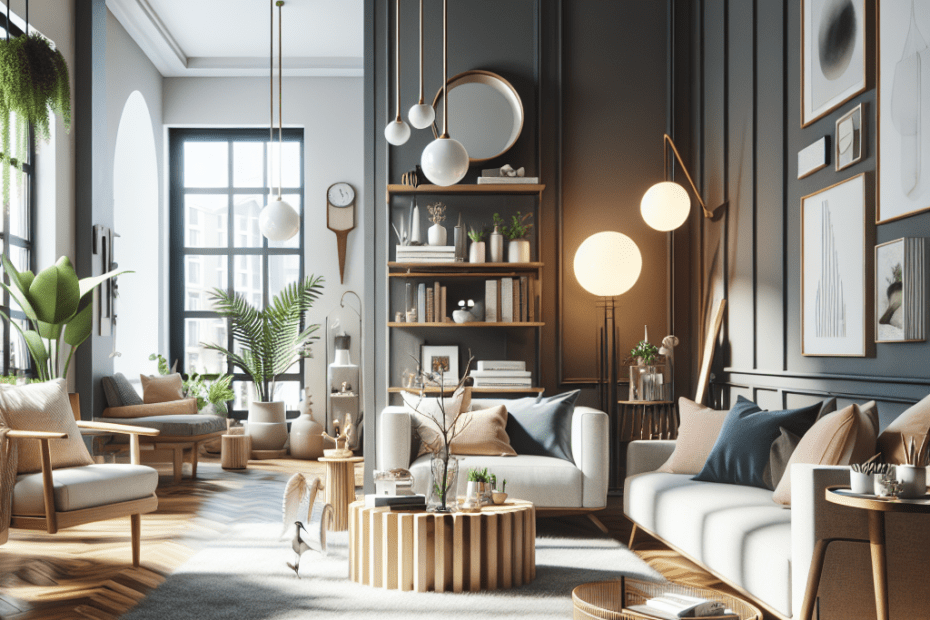“`html
Transform Your Small Living Room with Big Impact Design Ideas
When individuals eye their modest-sized living rooms, it’s common to feel overwhelmed by the challenge of finding the right balance between functionality and aesthetics. But fear not! With creative small living room design strategies, they can make even the coziest spaces feel expansive and welcoming.
Understanding the Challenge of Small Living Rooms
Everyone desires a living room that feels open and inviting, regardless of its square footage. According to the National Center for Biotechnology Information, small living spaces are becoming more common due to increasing urbanization and the global move towards minimalism. However, with these strategies for small living room design, anyone can maximize their area without sacrificing style.
Utilize Multi-functional Furniture
Multi-functional furniture is a lifesaver when space is scarce. Pieces like sofa beds, ottomans with hidden storage, and foldable tables allow for a versatile living area. They enable them to shift between a cozy lounging spot to a functional workspace with ease.
- Sofa Beds: Great for accommodating guests.
- Storage Ottomans: Ideal for keeping clutter at bay.
- Nesting Tables: Can be separated or stacked to create room.
Opt for Light and Airy Colors
The color palette in a small living room significantly impacts its visual space. Light, neutral colors like whites, soft greys, and pastels reflect light, making the room look larger. The Better Homes & Gardens magazine suggests incorporating a pop of color through accessories to add personality without overwhelming the space.
Make Use of Vertical Space
In compact living rooms, it’s essential to think vertically. Adding shelves or bookcases that extend to the ceiling draws the eyes upward, creating an illusion of height. Moreover, hanging art or decorative items at varying levels can add dimension.
| Design Element | Impact on Space |
|---|---|
| Floor-to-Ceiling Shelves | Utilizes vertical space for more storage/display. |
| High Curtain Rods | Makes ceilings appear higher. |
| Vertical Art Arrangements | Adds depth and interest. |
Use Reflective Surfaces
Mirrors and other reflective surfaces can double the perceived size of your living space. Positioning mirrors opposite windows will reflect natural light, making the room brighter and larger. Glossy finishes on furniture and decor also aid in bouncing light around the room.
Open up with Strategic Layouts
The arrangement of furniture can make or break the perception of space in a small living room. Keeping pathways clear and opting for an open floor plan can significantly enhance the room’s usability and flow. Consider positioning sofas against walls and avoiding oversized furniture pieces that dominate the room.
Key Takeaways
- Opt for multi-functional furniture to maximize usability.
- Use light colors and reflective surfaces to create an airy atmosphere.
- Think vertically to make the most of available space.
- Strategically arrange furniture for enhanced flow and openness.
- Add personal touches with small decor to avoid clutter.
Frequently Asked Questions
- What colors are best for small living rooms?
- How do mirrors help with small living room design?
- What is the benefit of multi-functional furniture in small spaces?
- How can vertical space be used effectively?
- Why is an open layout recommended for small living rooms?
Light and neutral colors such as whites, greys, and soft pastels are best for making the space feel larger.
Mirrors reflect light and give the illusion of more space, making the room feel brighter and more expansive.
Multi-functional furniture saves space by combining multiple furniture needs into one piece, enhancing usability and reducing clutter.
Use tall shelves and arrange decor upward to draw the eye upwards, making the room feel spacious.
An open layout avoids crowding and maintains clear pathways, making the living area feel more accessible and less confined.
“`
With these thoughtful design strategies, any small living room can become a living space of comfort and style. Remember, it’s all about making informed choices that align with one’s lifestyle and preferences, creating a space that truly feels like home.
